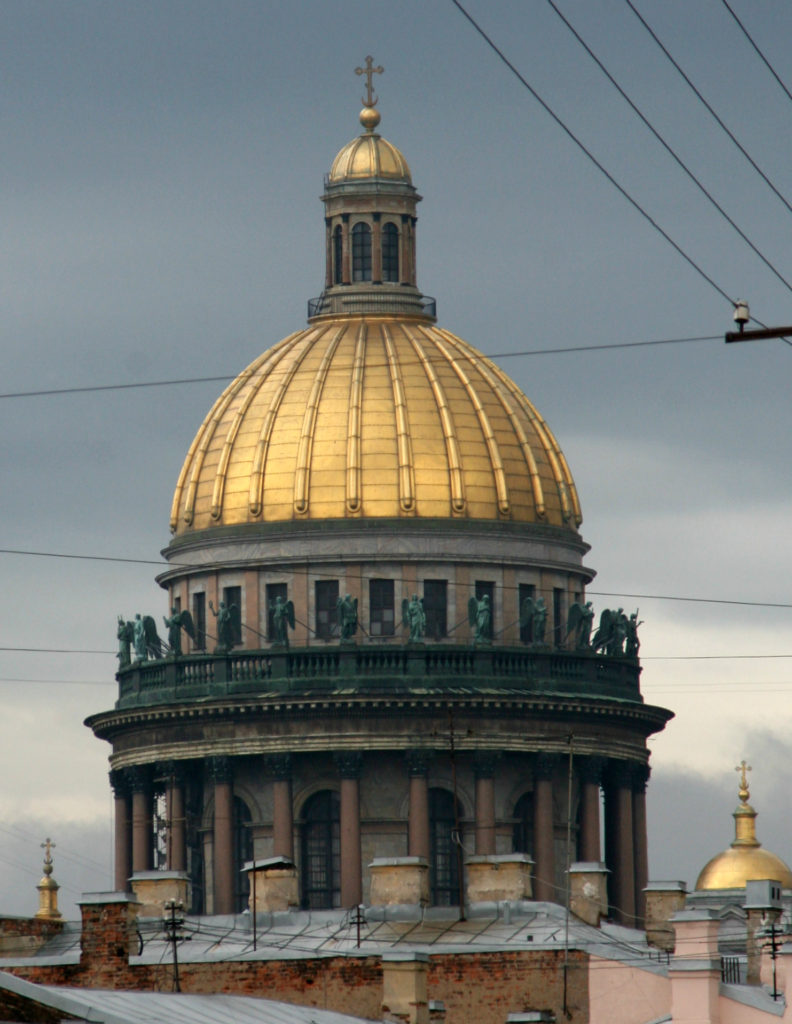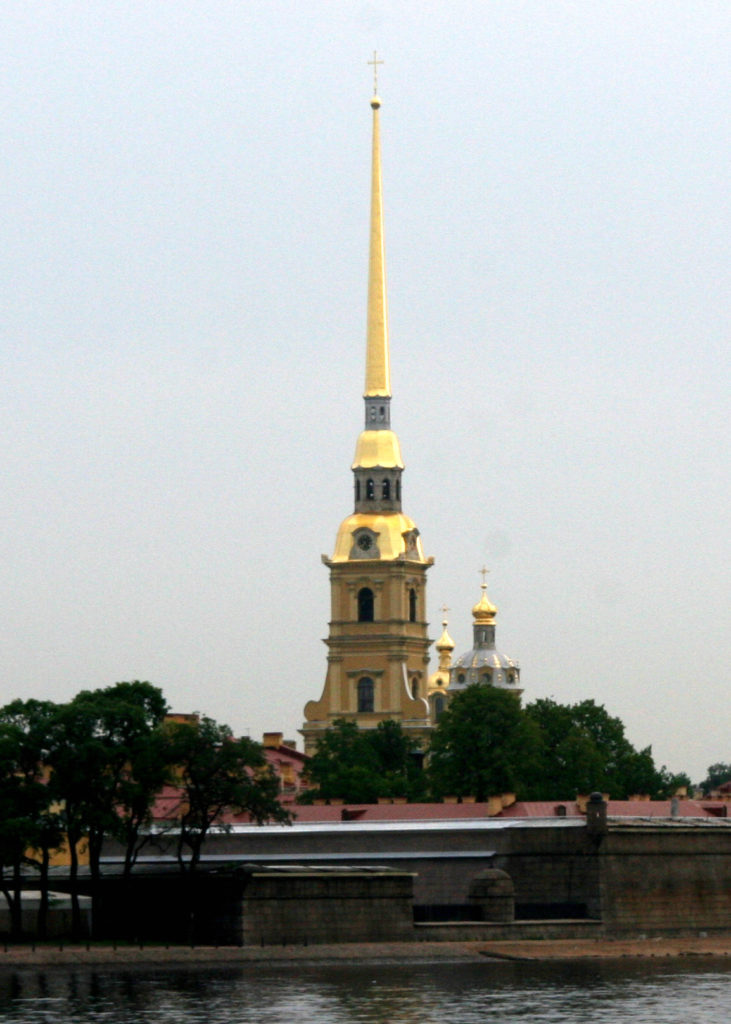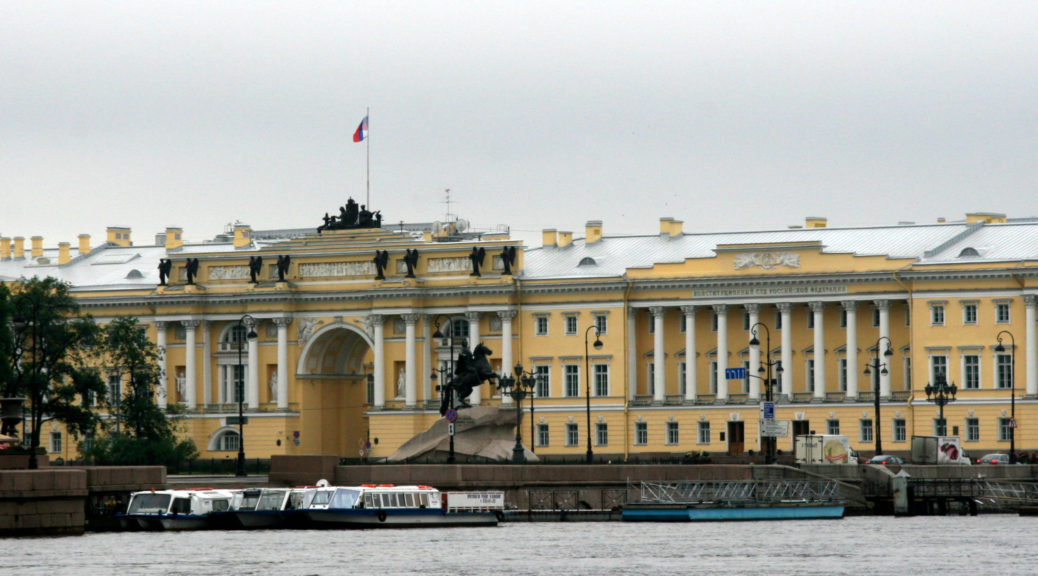
Views of St. Petersburg by Boat, Foot and Bus
Part of our shore excursion in St. Petersburg was a Canal Tour which would take us on three rivers: the Fontanka, Moika and Neva. The rivers are an integral part of the city together with a canal system that connects them. The Neva runs through the center of the city and connects to the Gulf of Finland. It is part of a major shipping route. Two of the canals are the Griboedov, along which the Church of the Savior on the Spilled Blood lies, and the Kryukov. As you might expect, there are many bridges in St. Petersburg – actually about 800 of them. The pictures below are of the Bolshoy Konyushenny Bridge built over the Moika River, the Trinity Bridge over the Neva River, and the Lion Bridge over the Griboedov Canal.
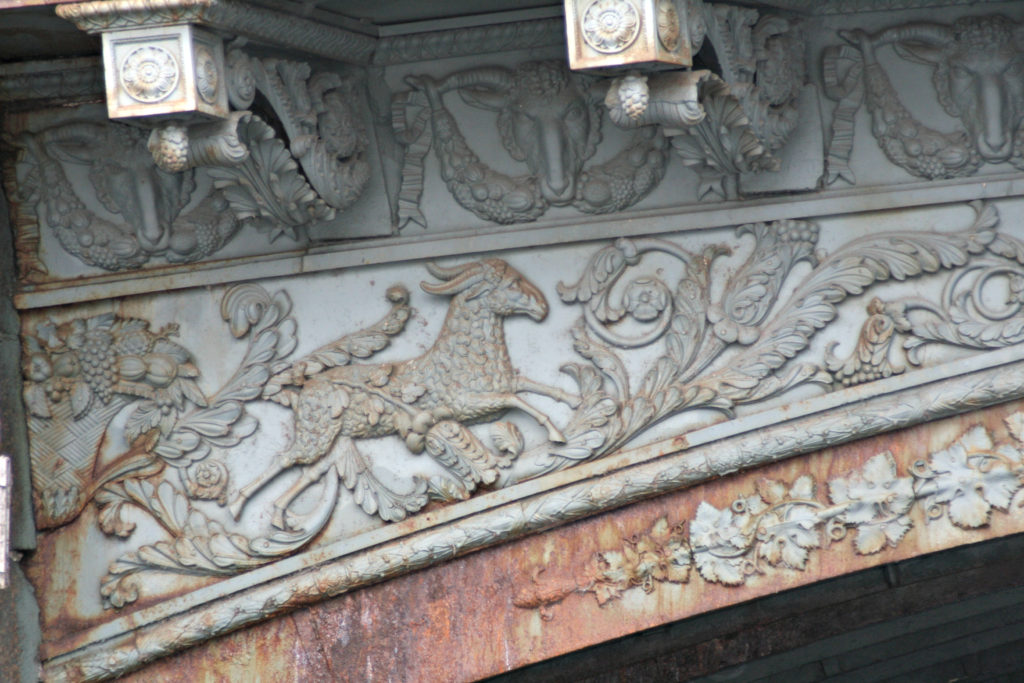
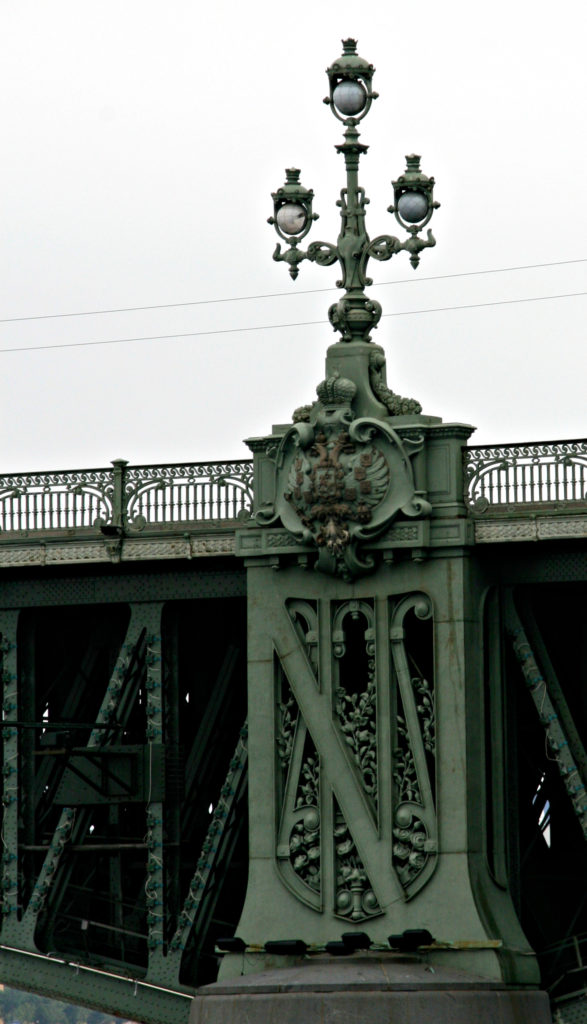

The pictures below were taken of Vasilyevsky Island. It is the largest island in the Neva. Peter the Great envisioned it as the center of St. Petersburg. It was used as a seaport in the 1770’s and later developed into a scientific and educational center. The eastern part of the island is known as the “Spit” and is where many buildings were constructed in the 1800’s, most notably the Old Stock Exchange (first picture below). It was originally built in the 1730’s but was replaced by a stone building in the 1780’s. The building was very unpopular, almost immediately torn down after its completion, and the building we see today was then built and completed in 1810. The facade has 44 columns. Above the main entrance is a statue of Neptune with two rivers, the Neva and the Volkhov (second picture). The building was modeled after the Temple of Hera in Paestum (Greece). It has served many purposes and is currently transitioning to serve as the St. Petersburg International Commodities Exchange.
The last picture in this section is of one of two rostral columns. These sit on either side of the Stock Exchange building. In Rome, rostral columns served as a symbol of naval victories. It comes from the term “rostra” which is a protrusion from a warship meant to ram another ship. The rostra of captured ships were mounted on the columns. In St. Petersburg, the columns were fashioned after the Roman ones, but served as beacons or lighthouses, marking the two channels around Vasilyevsky Island. The caldrons at the top of the column were filled with oil and lit. At the base of the columns are statues representing four major Russian rivers, the Volga, Dnieper, Neva and Volkhov. The columns themselves, which are over 100 feet tall, are decorated with nymphs, sea creatures and anchors.
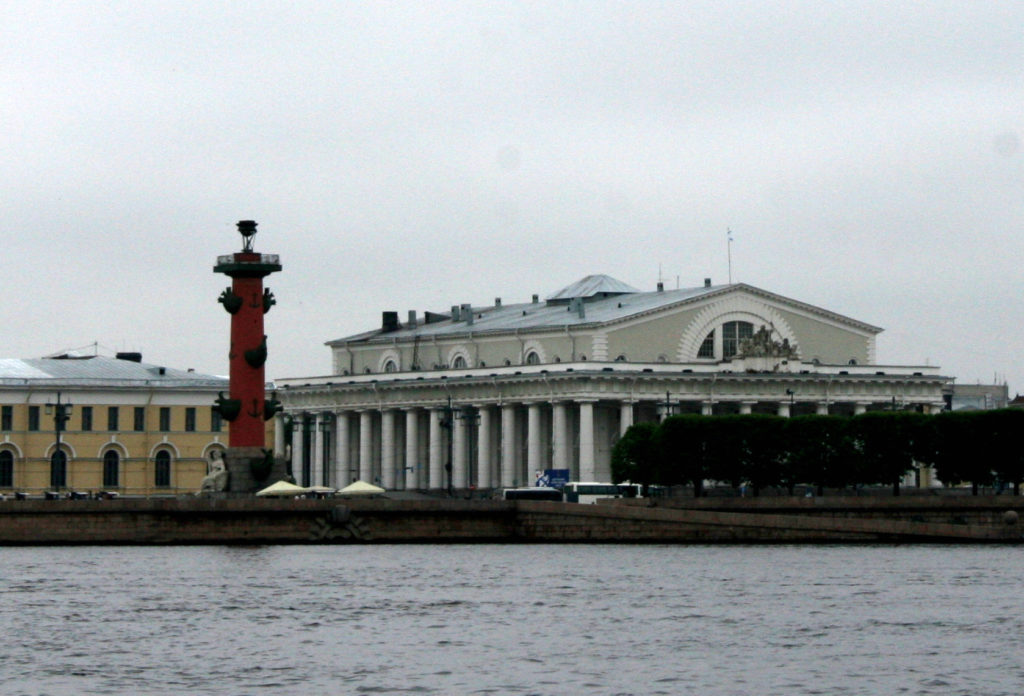
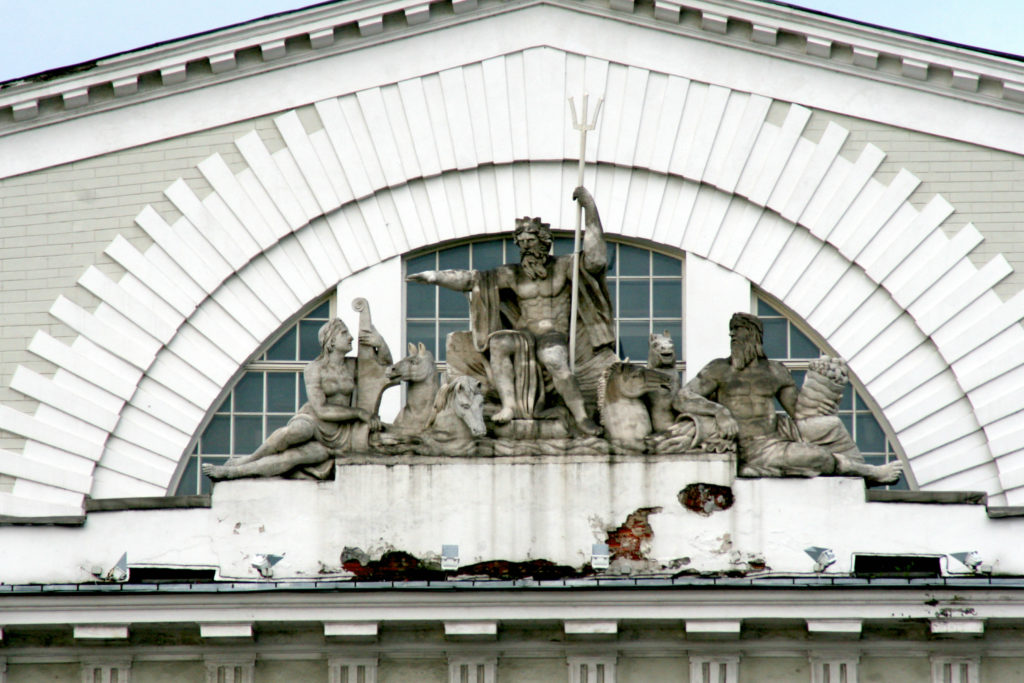

There is about 3/4 of a mile on the Vasilyevsky Island known as the University Embankment. It is lined with granite and there are buildings from the 1800’s along the embankment. One of the buildings, shown in the first picture, is the Kunstkamera, the first museum in Russia. Originally it was the home of the Peter the Great Museum of Anthropology and Ethnography. It is still a museum today and has pieces from all over the world.
The next picture is of a small winged lion on the shore of the University Embankment. Other than finding that it is a bronze statue, sometimes called a griffin (lion-like creature), I found very little information about the statue. It sits in front of the Academy of Arts along the embankment.
Also along the University Embankment are two sphinxes sitting on granite pedestals. The sphinxes were found in Egypt and are approximately 3,500 years old. They have the head of a pharaoh and the body of a lion. They once were among the sphinxes that were outside the tomb of Pharaoh Amenhotep III. Discovered in Egypt in 1820, they were purchased on behalf of the Russian Emperor in 1830 and brought to St. Petersburg. They are made of pink granite and weigh about 23 tons each. They have been restored, most recently in 2003. There is some discussion about moving them to the Hermitage where they would be protected from the elements, but for now, they are still on the banks of the Neva.




The first picture below is the Summer Palace of Peter the Great. It lies along two rivers, the Neva and the Fontanka. The palace was first made of wood but in 1710, the decision was made to construct it of stone. It is very modest, but has beautiful bas reliefs in red between the first and second floor windows. It was also the first building in St. Petersburg to have piped water. It was heavily damaged during World War II, but the interior has been restored and it is now open to public where people can see what life might have been like 300 years ago for Peter the Great. Peter the Great lived on the first floor and his wife and children on the second floor.
The next picture is the Admiralty. The first Admiralty Yard was built close enough to the Peter and Paul Fortress that a canon ball could reach it, ensuring it could be destroyed if captured by enemy forces. It was the shipyard that built much of the naval fleet of the time. The building is almost three blocks long and is along the Admiralty Embankment. It was completed in 1823. It closed as a shipyard in 1844, after building 262 warships. Since 1925, it has served as a naval college.
We also saw the cruiser, Aurora, but only from the outside. It was built between 1897and 1900. The ship was in the Russo-Japanese War and later in World War I. In 1916, she was moved to St. Petersburg for repairs. It was during this time that there was much talk of revolution within Russia. Part of her crew joined the revolution. The ship’s captain was killed when he tried to stop the revolt. A revolutionary committee was formed aboard the ship and a new captain elected. The Aurora fired a blank shot toward the Winter Palace, signaling the start of the October Revolution. Today the ship serves as a museum.

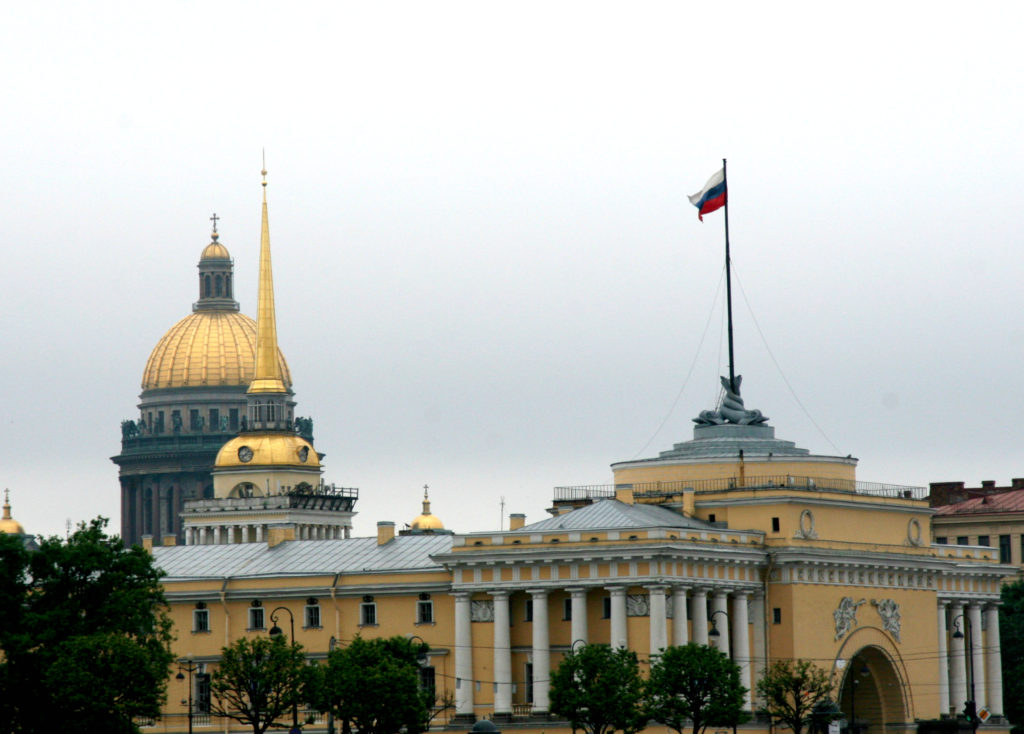

While walking and driving about, these are some of the other places/sites we saw.

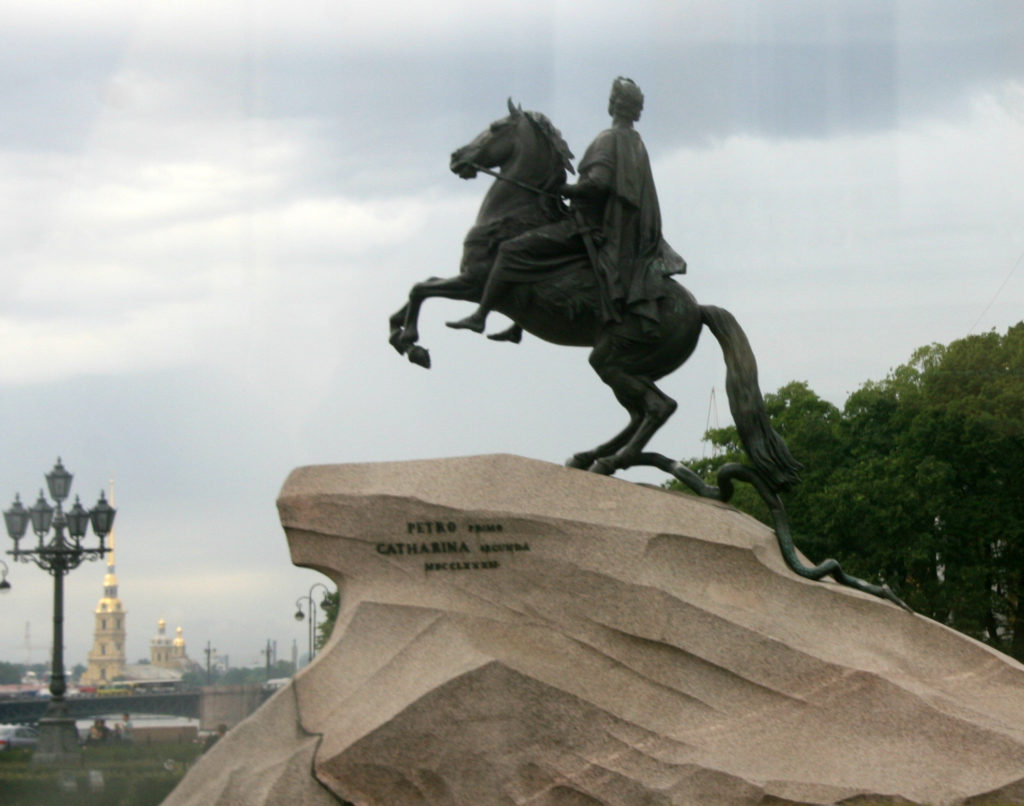
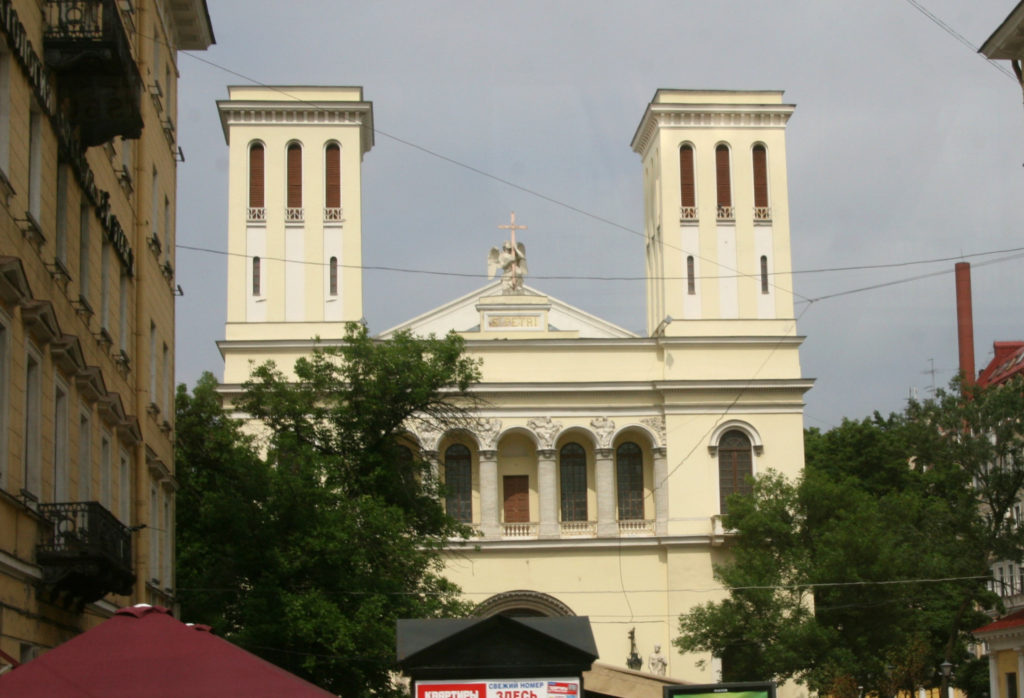

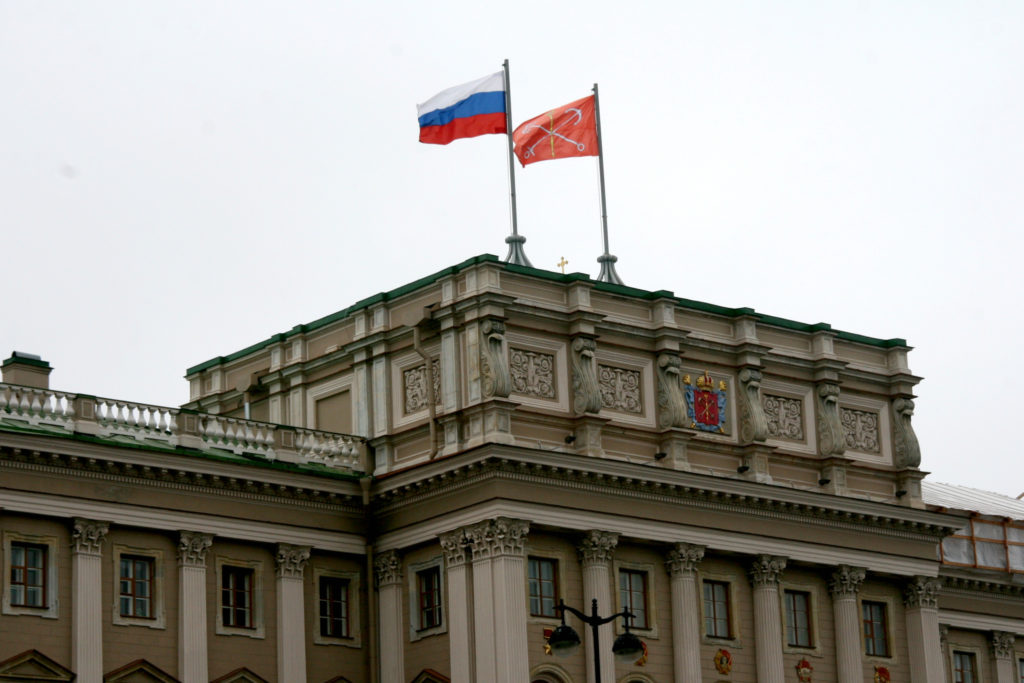
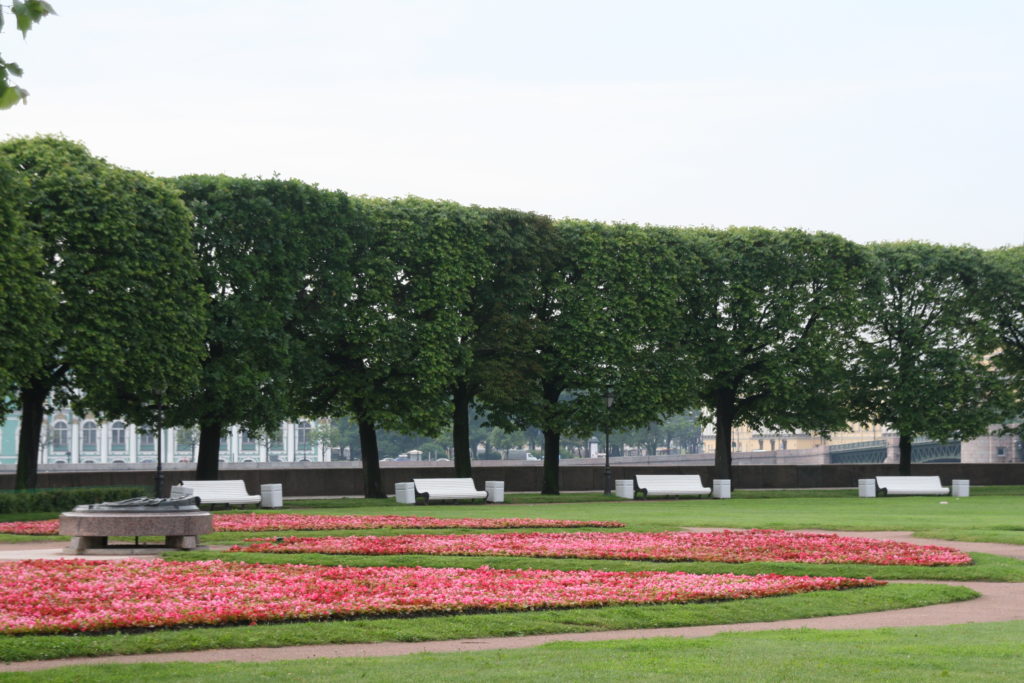
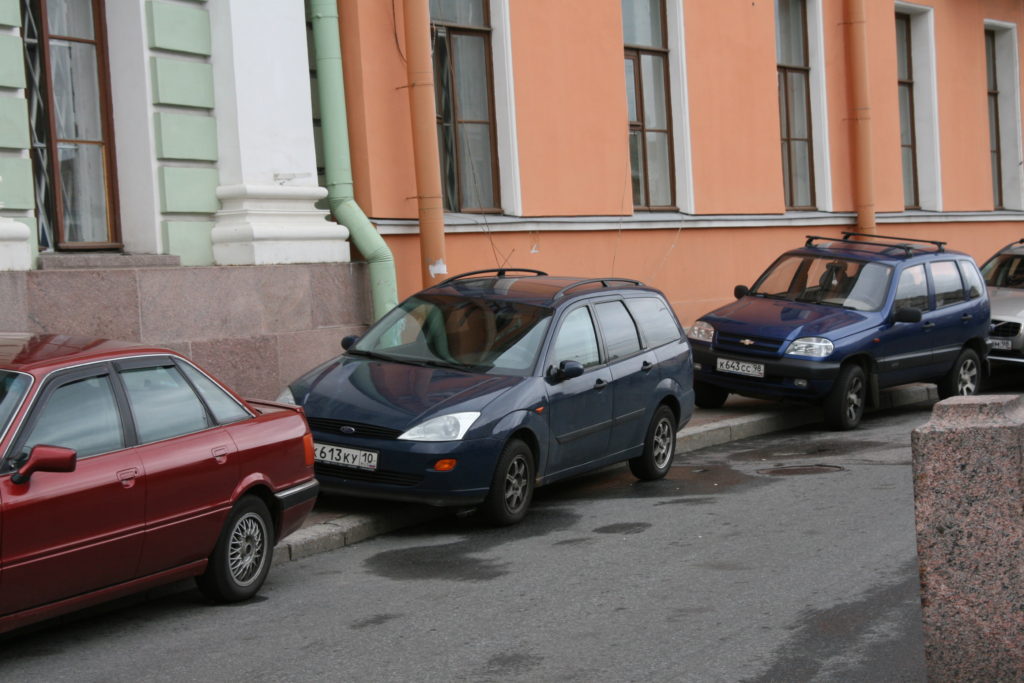
As a preview of upcoming posts, I will share pictures we took of three more places we would visit. The first picture below is of the Hermitage, Russia’s first museum and the second largest in the world. It originally served as the Winter Palace. We took this picture while on the Neva River. The second picture is of St. Issac’s Cathedral and was taken from our bus window. It was once the main church in St. Petersburg. The last picture is of the Peter and Paul Cathedral, and is also a view from the Neva. It sits inside the Peter and Paul Fortress, built to protect Russia from a possible Swedish invasion. I hope you will read more about these impressive sites in my next posts.

